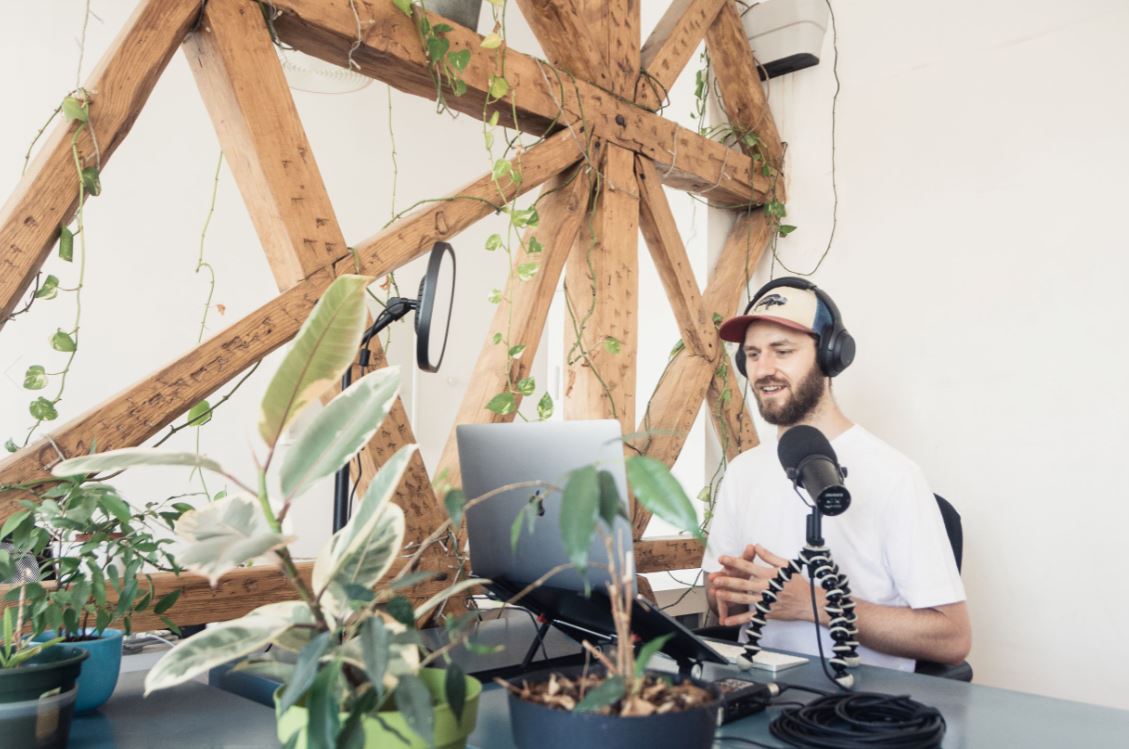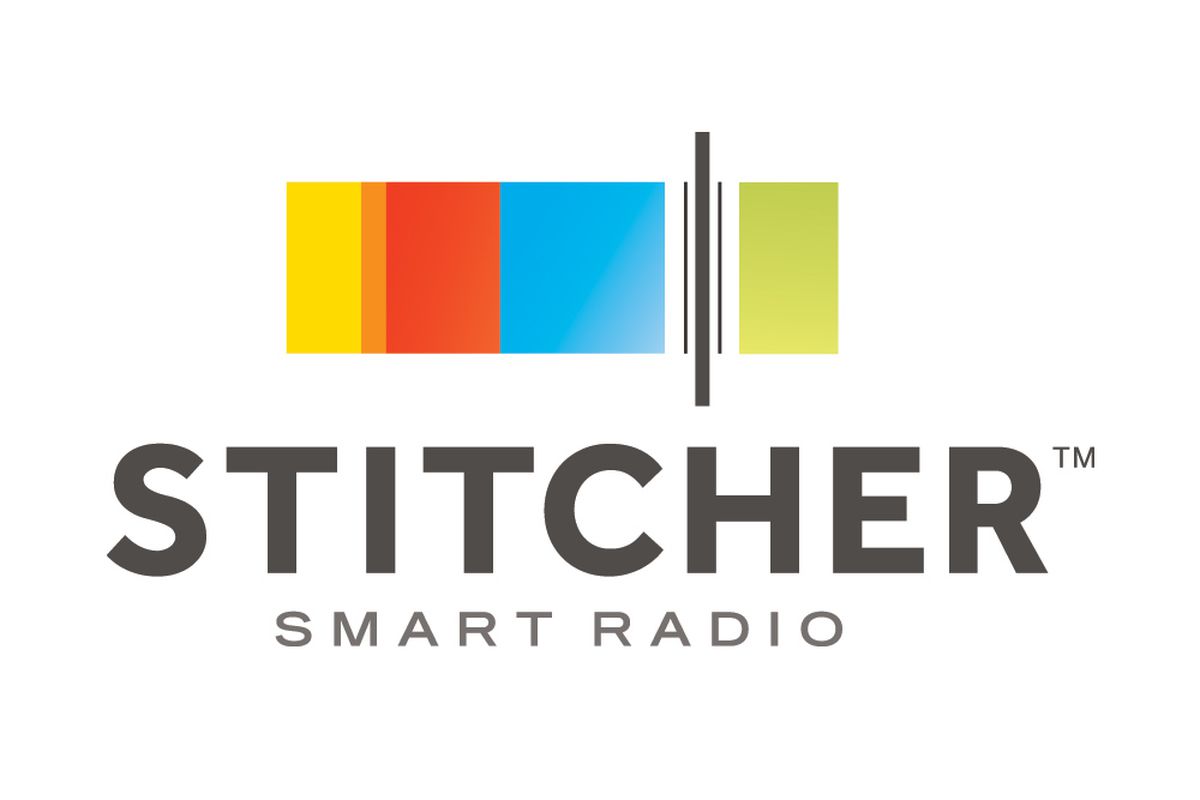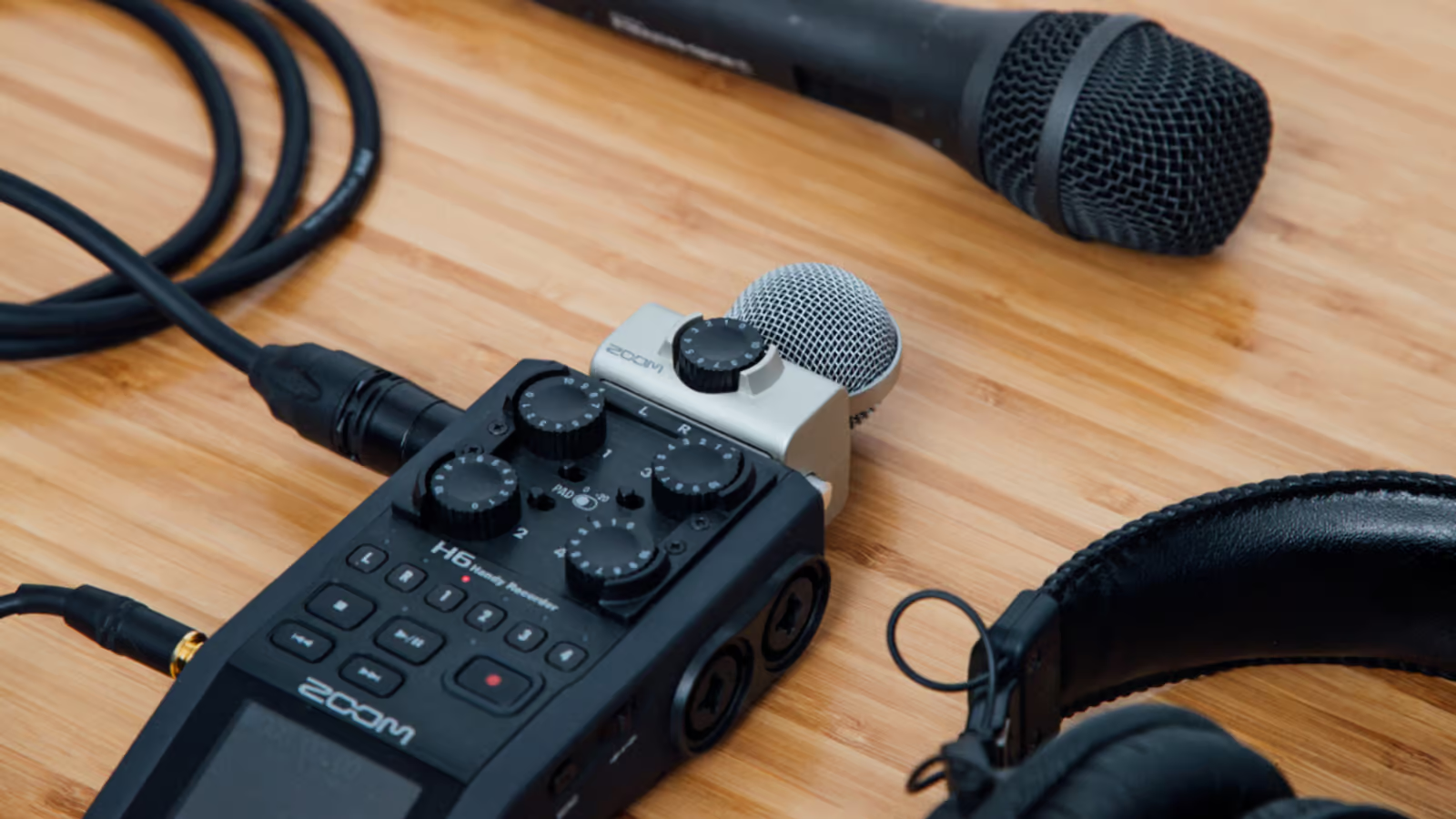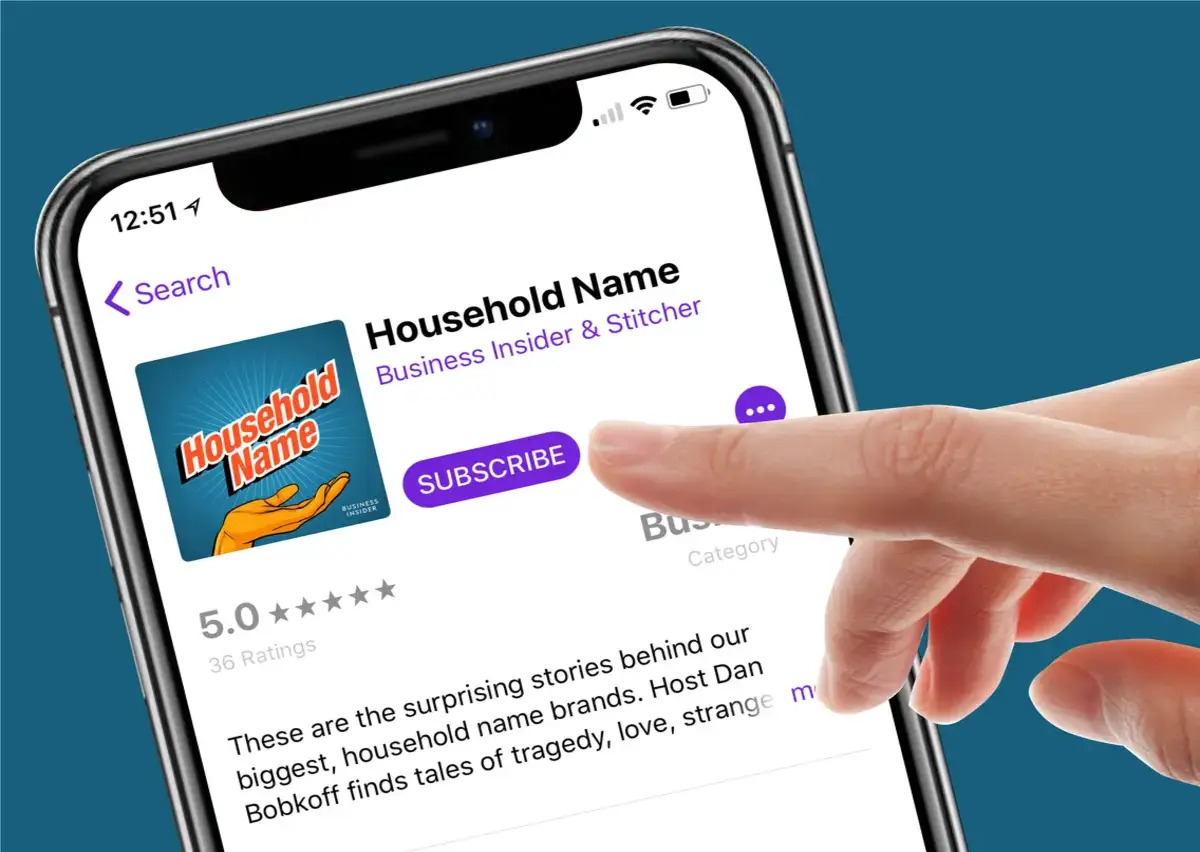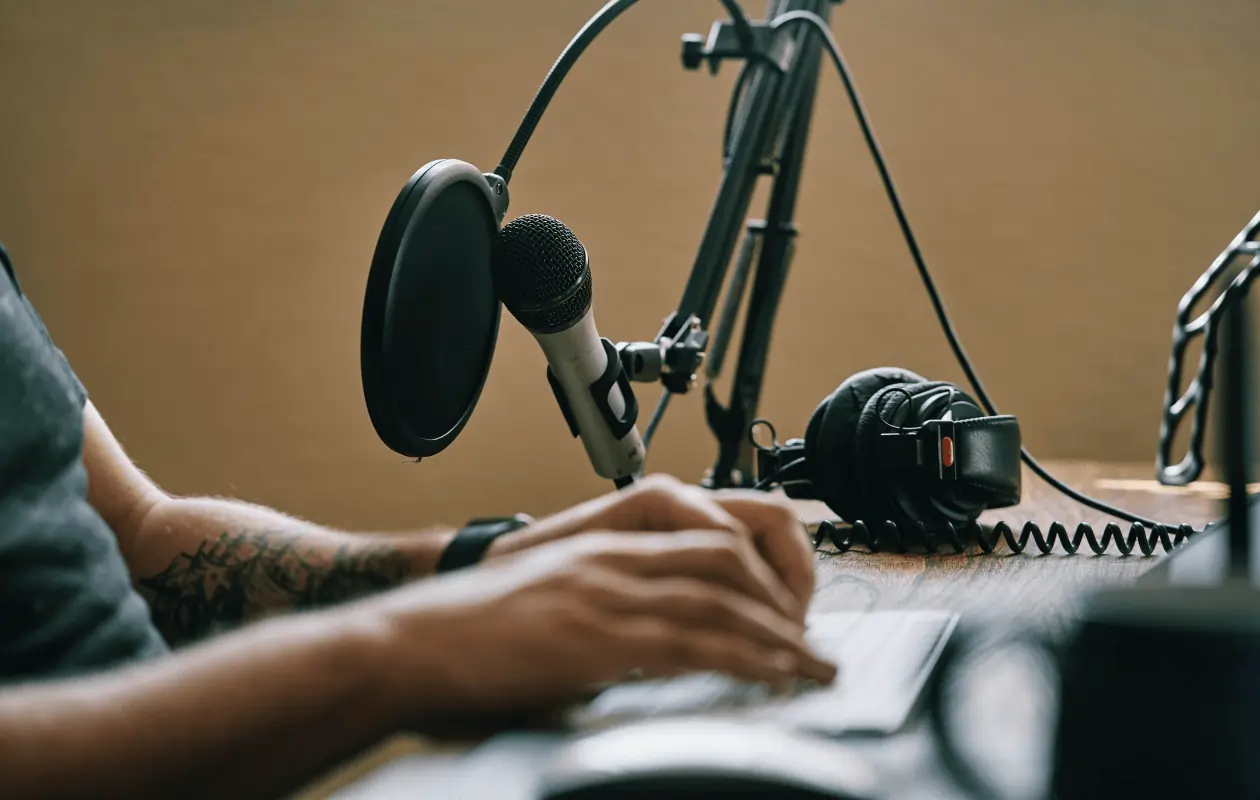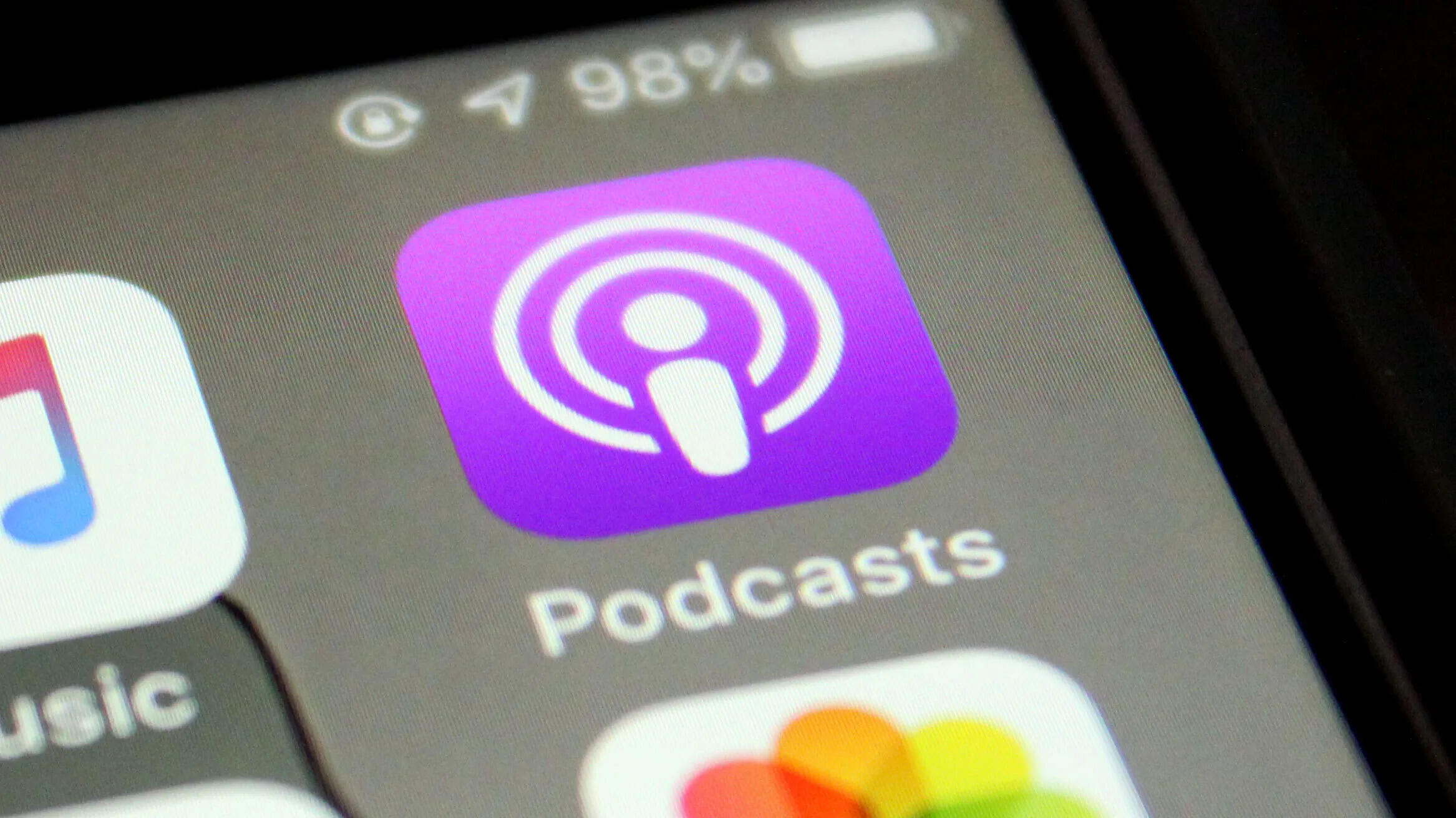Want to learn how to start a podcast? It may feel intimidating if you don’t know where to start, but don’t let that stop you. Podcasting is a great way to share yourself, your skills, and your experiences with the world! Even if you don’t have any experience in hosting your own podcast, this article will show you a step-by-step guide on how to do it. Before you know it, you’ll be launching your own show!
What Is a Podcast?
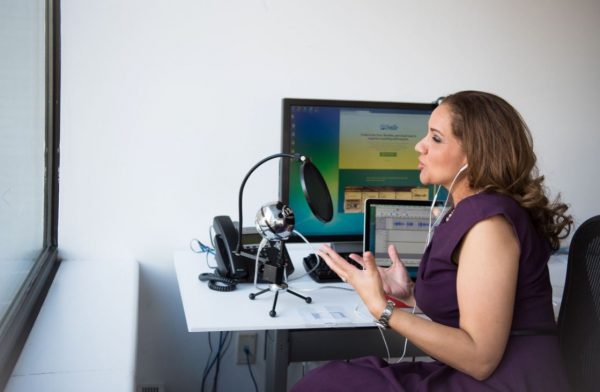

But before we get into the meat of the discussion, what exactly is a podcast? What comes to mind when you hear the word? Let’s first nail the definition before you try to become a successful podcaster.
A podcast is a series of digital audio content that people can listen to via different platforms. Audio content is a vast umbrella term and it can range anywhere from commentaries, talk shows, and spoken word to music, self-help, comedies, and so much more. The key is that it follows a specific format and episode length just like any TV show. They usually tend to have a central theme or topic to zero in on throughout the podcast’s run. Successful podcasts are often those that really focus on specific subjects and don’t stray too far from their niche.
A podcast can be hosted by anyone—individuals, radio networks, a group of music artists, and even corporate organizations. It can be directed to any audience they feel is appropriate and anyone else who is interested in their content. The episodes are often grouped up into seasons, and each episode is released depending on the creator’s schedules. Podcast episodes can be published daily, weekly, bi-weekly, and so on.
To get really gritty, the term “podcasting” came from the mind of BBC journalist Ben Hammersley in 2004, combining iPod with broadcasting to put a label on the concept. You don’t, however, need an iPod if you’re thinking about ways on how to start a podcast. It’s been rumored that Apple went after them for using the word pod in the naming process, but Apple has made it clear that they had no objections.
How Does It Work?
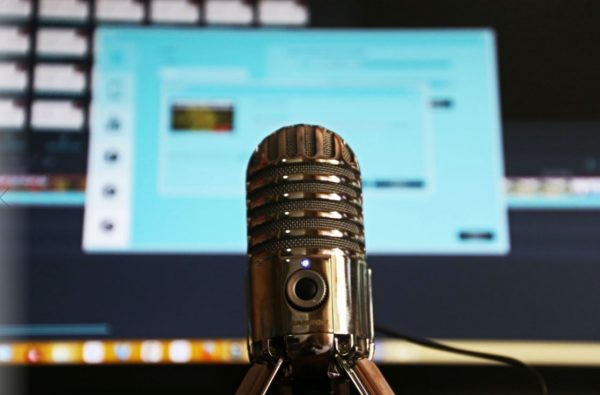

Starting a podcast is more or less like having your own radio show except that it’s not always live. It can be streamed live to your audience if you want to, but podcasts are pre-recorded most of the time. To understand how to start a podcast more easily, you can think about how blogging has enabled millions of people to share their content almost instantaneously. The same is true in podcasting. Anyone can do it. All you need is some podcast equipment, a recording app, a podcasting platform, and the unique content that you would like to share with your intended listeners. It’s simple. You record the content, host your show on a podcasting site, and let people discover you or find your channel.
As for the listeners, they can simply go to a podcasting website or download a podcasting app and start listening! It’s up to them if they want to subscribe to you or follow you. Some of these subs are paid while others are free. Often, you can set up donations so that you don’t necessarily ask your audience to pay you monthly in order to support you and your show.
If you’re ready, here is the step-by-step guide on how to start a podcast. But first things first, you need to ask yourself a couple of things.
Before You Start: First Things to Ask Yourself
1. Why Do You Want to Start a Podcast?


There is no right or wrong answer to this question. If you want to start a podcast, no one should stop you. But you need to know the answer to this question accurately in order to set up your podcast successfully. The nature of your podcast, the podcast platform that you choose, the length of your episodes, etc. all depend on this. Are you an artist who wants to showcase your work? Are you a freelancer or a business person who wants to gain clients? Or do you simply want to know how to start a podcast simply for fun? These are all valid reasons but your strategy will differ based on them.
A podcaster who intends to use their platform for business purposes needs to build authority and trust to gain and retain their audience. An artist, on the other hand, needs to focus more on keeping their content as engaging and entertaining as possible. While this is not always a rule, podcasts that have a more informative tone rather than entertaining are ideally shorter and direct to the point. So, make sure to ask yourself these questions before you proceed. Having a clear answer to this will also help you direct your podcast to the right audience more easily.
2. What Is Your Topic?
Perhaps the most important thing when learning how to start a podcast is determining exactly what your topic is. What do you want to talk about in your show? Don’t worry too much if there are already similar podcast topics out there. The important thing is knowing how you can deliver it uniquely and what you can offer that the others don’t. How much do you know about this specific topic?
To help you with podcast ideas, think of the things that you are most passionate about and narrow them down to those that you have extensive knowledge of. It could also be that you’re not an expert on it and rather than providing the information yourself, you can invite guests who can discuss these topics with you. That is a type of podcast that has a lot of potential. Listeners can look forward to your guests and hear their opinions on the topic you want to discuss. On the other hand, you can have a co-host who can talk about your topic better.
It is crucial that you are clear about what your topic is. Otherwise, it will be too confusing for both you and your audience, and people will easily lose interest in your show. Are you promoting something? A book you’ve written, perhaps? Do you want to give health and wellness advice? Are you advocating for certain causes or issues like mental health?
3. Who Is Your Audience


Once you’ve determined your topic, it will be a lot easier to find your audience. If you’re giving workout tips, your audience will naturally be gym enthusiasts but take note that you can always do a different take on things. For example, instead of people who are already interested in going to the gym, your audience can be doctors or physicians who want to encourage their patients to exercise. Your show can provide information that these professionals can share with their patients.
If your topic is meditation, determine if your show is for beginners or those who are already experienced in it. Someone who is only learning about meditation will not listen to a meditation podcast where the host is using a lot of complicated jargon. So, if you want to capture beginner audiences, you need to plan and script your podcast accordingly. You will learn more about scripting and planning your podcast episodes later in this how to start a podcast guide.
If you are a musician or a singer, you need to target an audience that is interested in your music genre. You can even be a craftsman who wants to share tips on how you do your work, and your audience can be either fellow craftsmen or people who simply want to start a new hobby that they can do at home. Be clear if your tips are indeed things that people can do at home or if they’re something that requires a workshop or work station. These are all very important things to determine before you start.
Getting Started: The Basics
4. Name Your Podcast
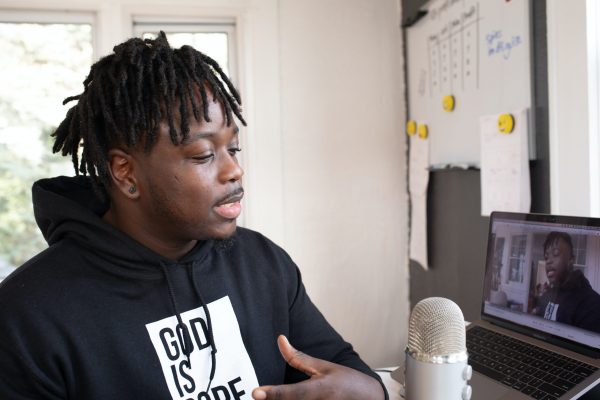

When you’re clear about your intention, your topic, and your audience, you can now name your podcast. If you want to learn how to start a podcast successfully, you must learn how to name your podcast in a clever way. It’s alright if you have no clue what to call your show yet; everybody starts there, after all. It’s a good idea to look at existing podcasts and see what these hosts have come up with for their shows’ names. You do thiis not to copy them. Rather, this is for you to understand how each type of podcast is named differently.
You will notice that some names are more descriptive of what the show is about; some are narrower and some are broader. A good rule of thumb is to choose a name that conveys who you are and what your podcast is about. It should be short, concise, and easy to remember. Don’t forget to include a keyword or keyphrase that will let your audience know what your topic or theme is. Your podcast’s name should ring a bell, easy to say and type for search purposes. Most importantly, it should be relevant to your show. Here are some examples of podcast names and why they are successful:
Crime Junkie
The name is catchy and it accurately conveys what the podcast is about. This is a podcast about true crime and the name says enough.
Office Ladies
While this name seems confusing at first, it’s catchy and will make you at least look at the description. More on writing descriptions later. This podcast is about two women who talk about episodes of the show “The Office” including behind the scene stories.
Anything Goes with Emma Chamberlain
Well, now, here is a podcast that goes as broad as possible as the name suggests. Why is it still getting a lot of followers? That’s because the host has specified clearly and didn’t hide the fact that this show is truly about her thoughts and experiences on almost well… anything!
Pod Save America
This podcast, as the hosts’ description says, is for people who aren’t ready to give up on the country yet. It’s a conversation about US politics that breaks down weekly news. Their goal is to remind citizens of what matters and how each of us can help. The name is so poignant and relevant in every way.
Terrible, Thanks For Asking
This name is sure to crack you up. That is if you’ve ever had a bad day and been asked how you are and did not know how to respond. The show delves into subjects that most people find uncomfortable. It’s a clever name that most importantly, resonates with a lot of people who are struggling with their daily lives.
These are just some examples of podcast names that have become very popular. You may be tempted, at some point, to simply put your name and call it your show, like “The Trevor Noah Show”. While that is perfectly valid, you may want to reassess if people would really be drawn to it. But hey, if you think your name will catch attention and are confident that people will be interested, then go for it! As mentioned, there is no right or wrong way. These are only tips, after all.
5. Write a Description


While the name of your podcast is clearly important, people rely on the descriptions more to decide if they even want to sample an episode. Consider this your tagline and people will want to be satisfied with what they’ve read before they even click on an episode. Remember that we are living in an extremely fast-paced world so if you fail to capture them with your description, you will have already lost them. This is most likely the second most important thing to perfect when you’re learning how to start a podcast, next to choosing your topic.
Your description need not — more like it should not — be lengthy or in-depth. Its purpose is to capture attention. The meat of what will make your audience decide if they want to spend their precious time on your show is in the first few minutes of the episode they first listen to. Your description is where you showcase your podcast’s value. Why should people listen to you? Let’s look back at the “Terrible, Thanks for Asking” podcast mentioned above. The description is so witty, informative, and relatable.
Another tip is to add keywords that will make it easier for listeners to discover your show. It might even help your podcast to appear on Google search!
6. Choose a Category


Now it’s time to categorize your show. Which category does your podcast fall into? Is it for entertainment? Is it a podcast focused on self-help or is it for business? Remember that whatever the main interests of listeners, in general, will dictate what kind of content they want to consume. It’s important that your show appears under the category where you want it to be found. People will browse through categories and subcategories until they find a show that catches their attention. It is a fatal mistake to put your podcast under the wrong category because you will quickly lose your audience this way.
7. Choose the Right Podcast Format
Your podcast’s format is the structure of your podcast. It’s important to plan this when you’re learning how to start a podcast. It can also be considered the style of your show. The format of your podcast comprises of who or how many people will be hosting it, and if it’s something informative or more for entertainment purposes. Sample podcast formats include monologue podcasts where only the host will be speaking about their expertise, a co-hosted show, an interview podcast, a panel podcast, and a storytelling podcast, but there are so many other formats out there.
Some podcasts combine a couple of formats or styles. You can also deviate from your original format from time to time in some episodes to add a sort of variety. You can always change your format over time but it’s important to stick with one when you’re just starting out.
8. Decide If You Want/Need a Co-Host


As mentioned a few times above, you may or may not need a co-host for your show. The main purpose of having a co-host is to show a different perspective from your own. It somehow works like how commentators pair up so that the commentary is not too biased while they are commentating on a game. You may also want a co-host if you feel like you are not the expert on your chosen topic but still want to be the main host of the show. A co-host is also appropriate if the discussion would be more interesting when there is dialogue involved.
9. Decide Whether You Want a Panel
On the other hand, you can also create a group of hosts called a panel as mentioned in the seventh step. It’s good to determine this before starting a podcast. A group of hosts or a panel is ideal for political commentaries, news discussions, and the like. This is so that people can hear varying opinions about your topic for each particular episode. It’s also a great way to keep your listeners interested in your show. Your followers may decide to choose a favorite host over time and they’ll keep looking forward to hearing from them.
10. Determine the Length of Your Podcast Episodes
This is an important aspect when you’re planning how to start a podcast. The length of your episodes should be consistent so that your listeners know how much time to allot each time they tune in to your show. This would greatly depend on your topic as well. For topics that require heavy discussions or details, 45 minutes to an hour is common. Some run for around 20 minutes an episode, which is especially true for comedic podcasts. Others still run much longer than that, usually when it involves storytelling.
You may also want to look at the length of your competitors’ shows or podcasts that have similar topics to yours. If a similar podcast lasts about 45 minutes, you may want to experiment and make yours a 15-minute podcast to show that you can tackle the topics more efficiently and succinctly! Of course, some of your episodes may be longer than others just like in TV shows. The pilot and the season finale are almost always longer than regular episodes. There are no set rules on how long your episodes should be. It is all a matter of consistency.
11. Plan How Often You Will Release Episodes
The frequency of releasing your episodes follows the same concept of the duration of each episode. It all depends on the style or approach you want to take as well as your audience’s listening habits. More importantly, it would depend on your and your co-host/s’ availability. You also want to consider the amount of time and effort you need to put in on each episode. Do your episodes require plenty of time for research? Doing daily podcasts will not be ideal if that’s the case. Do you need to take time scripting interviews and scouting for guests? Maybe a weekly or bi-weekly podcast would be more appropriate. The important thing is to be consistent throughout. This will tell your listeners what and when to expect to hear from you next.
Setting Up Your Podcast
12. Choose a Podcast Hosting Service


Choosing a podcast hosting requires is a bit of a lengthy discussion but we will cover the basics. To launch your podcast, you will need a podcast hosting service that will distribute your show to different platforms. Examples of podcast platforms are Spotify, iTunes, iHeartRadio, and Pandora. Where your show will show up depends on your hosting provider. Some of them feature automatic distribution to Spotify and some have more limited options. If you want a wider distribution, you need to choose a hosting provider that offers as many integrations with different platforms as possible.
When you’re just starting a podcast, it’s important to not blow too much money on hosting since you don’t need a huge storage capacity or all the other bells and whistles yet. The most important things to consider when choosing a podcast hosting provider are its storage capacity, web integrations, analytics, and marketing integrations. These will all be very useful for beginner podcasters. An alternative is to host your podcasts through your own website if you have one or plan to launch one.
Comparing Podcast Hosting Services
Examples of podcast hosting sites or services include Buzzsprout, Transistor, Simplecast, Castos, Audioboom, Soundcloud, Anchor, and Spreaker. These are just a few that you can consider as your podcast hosting service.
| Buzzsprout | Transistor | Castos | Simplecast |
| Has a free plan | More appropriate for brands | Features integration with WordPress | Smooth embed players |
| Upload two hours of audio storage per month but your episodes will only be hosted up to 90 days | Host multiple shows | Customizable embed player to add to your website | Offers detailed analytics |
| Paid plan starts at around $12 per month where advanced statistics and analytics are offered | Great podcast analytics and stats | Offers a free trial | Allows you to set up a team to manage your podcast |
| Offers transcription integration | Paid plan starts at around $19 a month | Paid plan starts at roughly $19 a month | Paid service starts at approximately $15 per month |
| Check out Buzzsprout now | Check out Transistor Now | Check out Castos now | Check out Simplecast now |
13. Choose a Profile Photo
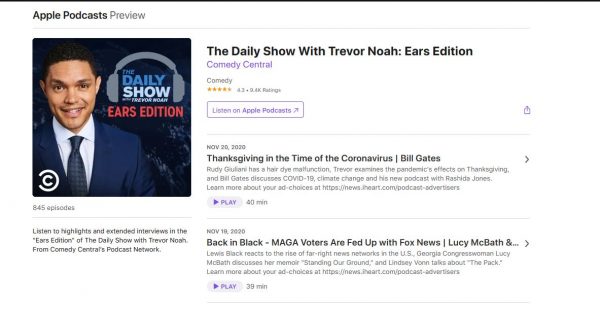

Regardless of whichever podcast hosting service and podcast platforms you choose to distribute your show, you will always need a profile photo for your show. Your profile photo must look professional and interesting because it contributes a lot to whether or not your listeners will tune in to your podcast. It’s important to learn this early on when you’re learning how to start a podcast. This will also help them distinguish you from others. If you can invest in it, have a professional take your photo or headshot.
14. Create Your Cover Art
Your cover art is like your cover photo on your social media profiles but it has a much more important purpose. It should represent what your podcast is about and what makes it different from similar shows. It is one of the first things that your potential audience will notice along with your description. Depending on the podcasting platform or app, sometimes, your description will be overlaid on your cover art so it needs to be compelling. At the same time, it has to look simple so as not to overwhelm them. Sounds complicated? It doesn’t have to be. Here are a few tips:
- Stick to simple and easy-to-read fonts if you have a text overlay
- Choose imagery that is faithful to the tone or theme of your show
- Your cover art should visually communicate your topic and tell a story behind your podcast’s name
- Use complementary colors to make it stand out
- Allow some spacing or padding to draw viewers to the most important imagery on your cover art
- Keep in mind that most listeners will be viewing your podcast page on a mobile device so make sure that it is optimized for mobile viewing as well
If possible, hire a graphic designer to make one for you. It might cost some money but it is worth the investment in the long run.
15. Add/Create Your Podcast Music
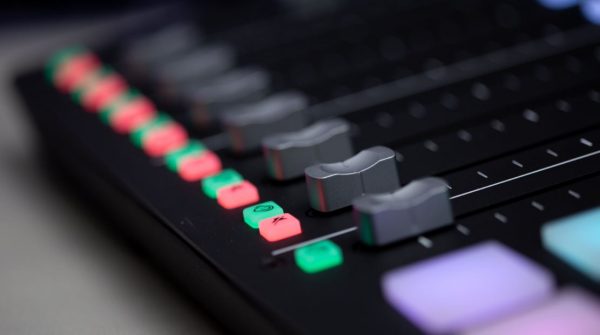

It is up to you if you want to have background music playing while you are speaking in your podcasts but the music must be appropriate for your topic. If you think music will just be a distraction, it’s better to ditch it altogether. Background music is ideal for storytelling and spoken word. However, if you are discussing a serious topic with a panel, it might be better not to have one so the audience can focus on what the hosts are saying. You may also want to add sound effects which is almost always a necessary element for comedic shows. Determine how much music your podcast needs and position them in the most appropriate segments. Other times, you only need an intro and an outro.
It is highly likely that you are not a music composer or producer. Where do you get your music or sound effects? The good news is there are plenty of websites where you can legally download and use music and sound effects for your recordings for free. Even some recording apps offer free music that you can release without legal implications. If you want, you can also pay for a subscription so you can get unlimited access to music that you can legally use for your show. One of the most popular websites where you can get music is Audioblocks although it requires a paid subscription. You can also look at websites like YouTube Audio Library, Free Music Archive, Creative Commons Music, and Public Domain Music.
Adding Intros
You only have a few seconds to make an impression so you need to come strong when it comes to your intro music. You’d naturally want an intro that resembles that of news TV or radio shows if your show is a discussion about news or current events. If you are a storyteller, you’d want an intro that is compelling but also appropriate for your theme. If you are mostly reading dramas and romance, then your music needs to be more on the melodramatic side. Musical artists will have an easier time with this as they only need to pick one track from their discographies. Sports commentary shows need intro music that is upbeat. It all depends on your show and your theme.
Adding Outros
Your outros, on the other hand, will determine how your listeners will feel after listening to your episode. Do you want to leave them feeling warm and fuzzy? How about disturbed? If you are doing a true-crime podcast, this is a great choice. Do you want them to feel uplifted, curious, ecstatic? Or do you want them to keep laughing out loud? The point is to make them feel so satisfied toward the end that they can’t help but click or look forward to the next episode. Again, you can easily find music on the websites mentioned above. But if you are up to it, you can always create your own using recording apps and DJ mixing apps.
You will find a bit more about recording apps below.
Getting to Work: The Real Deal
16. Write a Script if Necessary
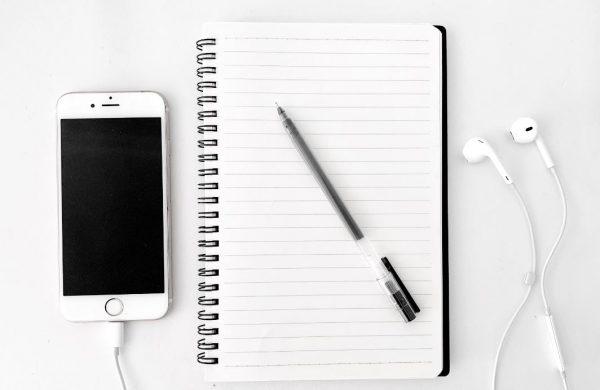

Whether your show is completely scripted or not, it is always a good idea to write at least an outline. This will help you structure your episodes and also start and finish strong. It is absolutely necessary to write a script if you are doing interviews. Sometimes, minimal scripting is enough. It’s like creating a skeleton for your show. It’s a step that is often overlooked on most guides on how to start a podcast. Even if you want your podcast to be as spontaneous as possible, writing at least an intro and an outro will make a world of difference.
Let’s say your show is about discussing a comedy TV show. You don’t necessarily need a strict script to follow for that type of podcast. However, you may want to script the points that you will tackle for a particular episode. Scripting also comes in handy to highlight specific ideas. Which are the funniest moments in Friends? What is so compelling about Alex Baldwin’s performance on this episode of SNL? Having a script will do wonders for your show.
17. Invest in Podcast Equipment
Nobody wants to listen to a podcast that has too much background noise or poorly recorded voiceovers. Investing in high-quality podcast equipment is necessary if you want your show to be successful. This is an important aspect when you’re learning how to start a podcast. Here are the most important pieces that you need for your podcast:
A Computer and a Microphone
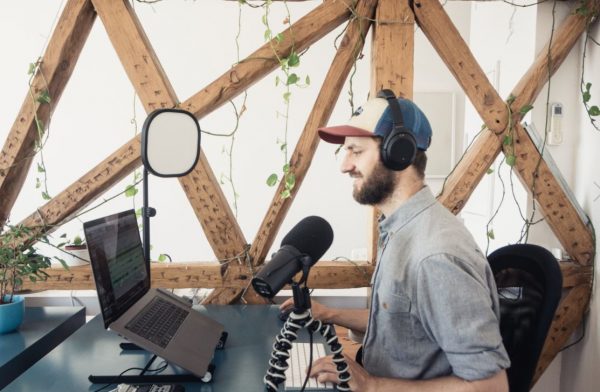

If you’re tempted to record your podcasts using a mobile phone or a tablet, don’t. While it is doable, it just won’t make your show as good as it possibly can. It will also greatly affect the sound quality of your recordings. You need a decent computer where you can store and edit your recordings and it makes things simpler. Your computer need not be a fancy one; it can be a laptop or a desktop as long as it has enough storage for audio files. Take note of this now while you are still learning how to start a podcast.
In terms of your microphone, it’s ideal to invest in a noise-canceling condenser mic. That is the bare minimum that you can use for a podcast for vocal recordings. If you are recording music, you may need a more advanced microphone than that. As much as possible, invest in a microphone that is dynamic, has enough boom, and can easily stand or be mounted. Some gaming microphones also have great features that may be appropriate for a podcast recording. Your mic can be a USB microphone or a traditional one as long as it is compatible with your computer.
Check out our list of the best gaming microphone for playing and streaming.
Recording and Editing Application
If possible, choose a software that allows you to both record and edit your audio so you don’t need to switch between apps. While some are paid, there are a few recording and editing apps out there that are free to use and have the features that you need when starting a podcast. You need audio editing software to ensure that your recording is clean and the transitioning is smooth. This is also where you will insert your background, intro, and outro music. It is not ideal to record your vocals while your music is playing. It is better to record them separately and then merge them using the editing software.
Examples of recording apps that also allow you to edit are Audacity, Adobe Audition, and Garageband for Mac users.
18. Record Your Podcasts
You are now ready to start recording. This is where the fun starts when you’re learning how to start a podcast. However, remember that it also requires serious work. Enjoy the process but be disciplined and willing to learn the techniques.
Tips When Recording Vocals:
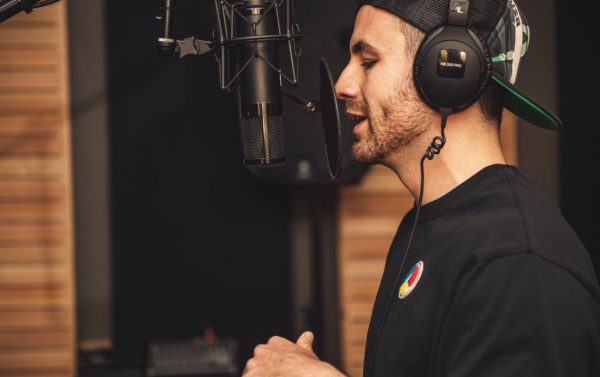

Don’t be intimidated if you’ve never done this before or have never used a professional microphone. The two most important things here are clarity and personality.
Your speech needs to be crisp and clear that’s why it’s important to invest in a professional mic. Otherwise, it defeats the purpose of starting a podcast. You may want to learn how to modulate your voice in order to get a quality recording. Doing tongue twisters before each recording will help loosen up your vocal muscles. And most of all: practice, practice, practice! Do not dive into your first recording without practicing how you speak.
Once you start recording, it is also important to know where and how to position your mic, how far you should be from it, and how loud your voice should be. Even the highest-quality microphones will produce low-quality results if not handled properly. It is better to have your mic standing or mounted so that it’s stable rather than being held. If you can, invest in a floor stand instead of a table stand.
Speak loudly but don’t shout. Also, no matter how good the noise-canceling feature of your microphone is, it could still pick up mouth noises so try not to make them. Chewing, gulping, moving your tongue around, or any other noise that you make unconsciously can be picked up by your mic. This also includes loud breathing. Think of professional voice actors and try to minimize these unnecessary noises as much as possible.
Creating a Unique Personality
You also need to create a personality that stands out. Since your listeners cannot see you, you need to do all this with your voice. It is your one tool to make a lasting impression. If you are a talk show host, how would you like your listeners to imagine you? Are you the perky, energetic type? Are you the serious host who gets straight to the point and doesn’t waste time on chit-chat? If you are a yoga instructor, how can you create a soothing voice that will fit your show? Determine this early on and practice before you even start recording.
19. Edit Your Podcasts
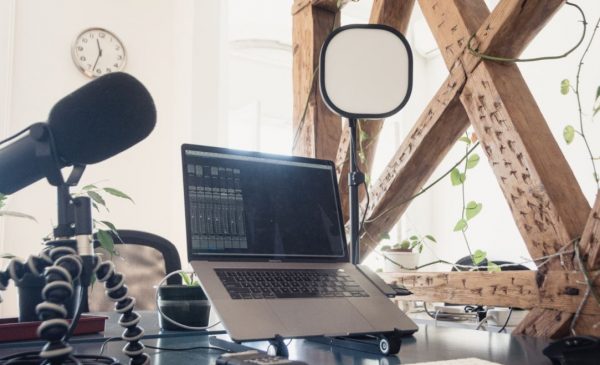

You may be tempted to record your entire podcast episode all in one take. It seems easy. But the fact is you will make mistakes along the way; it’s inevitable. It is recommended that you record your episode per segment, and this is where editing comes in. Plan how you want to record your podcast. Even if it’s a talk show, it’s still better to split your recordings into segments. It seems like more work, but it really makes things simpler. If you or your guest or co-host makes a mistake, you don’t need to re-record the whole episode. Recording your podcast episodes into segments will also save you a lot of time when there are parts that you want to cut out. Instead of going through the entire recording just to search and cut the guilty segment, you can simply delete them.
Once you have your recorded segments complete, you can put them all together but make sure that the merging is not obvious and the transitioning is smooth as mentioned above. The recording apps mentioned above are all easy to use and don’t require professional expertise. Anyone who’s just learning how to start a podcast can easily use these apps. You will also need to edit the loudness, noise level, and effects of your recordings, and balance all of them out. Some recording and editing apps allow you to add effects such as making it sound like you are in a concert hall.
Putting Your Show Out There
20. Export Your Audio File
Depending on the recording software that you used, your final audio file will be in a particular format. It can be an MP3, Windows Wave (WAV) file, Windows Audio Media (WMA), or others. You need to consider the sound quality of these audio formats as well as the accepted formats of the podcast host and platforms that you are using. Make sure that it is in the right format so you don’t need to waste your time converting files. Converting audio files can sometimes reduce their quality as well, so make sure you record in the right format.
21. Distribute Your Podcast
As mentioned in the section on choosing your podcast hosting service, the platforms where you can distribute your podcasts will depend on your host and their affiliations with these platforms. Often, they will take care of the distribution for you. If your host is Buzzsprout, for example, you will have automatic access to submit your podcast to all of the major platforms. Alternatively, you can also submit your podcasts to directories such as Apple iTunes and Spotify.
22. Launch Your Podcast
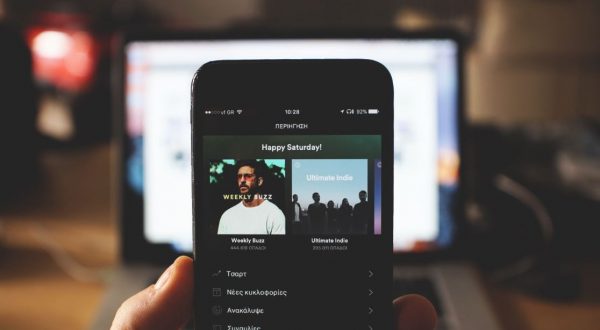

As for the final step of this how to start a podcast guide, this is the part where you have the most freedom and versatility. You are not limited to your podcast hosting and platforms when you launch your podcast. You can do it through social media, your website, or almost any other place that allows it. All you have to do is tell the world that you have a podcast and that you would like for them to check it out and give it a listen! However, how you do this will have a great effect on how successful your podcast will be. You need to think of a good strategy and you need good timing to make your launch a success.
Tip: Create Buzz Like You Are Launching an Event
Even if you’re not yet popular, creating buzz leading up to your launch will make people curious and excited. If you have a social media page, create posts that drum up interest among your target audience for your show. Start posting as early as one month before your intended launch date. You can even create sneak peeks of your show, make live videos. Do it as the pros do!
Starting a podcast need not be a complicated ordeal, but you have to commit to it and be serious about following through. Unless you want it to be a one-time hit, you need to consider doing continuous planning and investing in your equipment, material, software, and most importantly, yourself. Hopefully, this guide on how to start a podcast has not only given you ideas but also inspired you to go out there and share yourself with the world!









